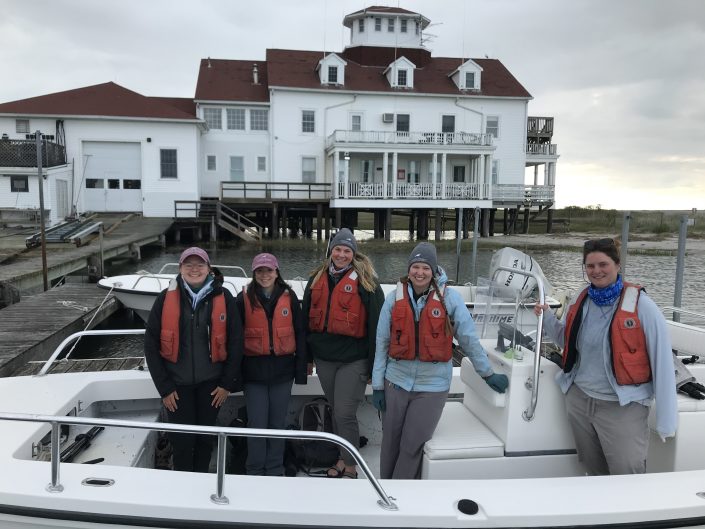It’s a Wrap! First Season of Delaware Bay American Oystercatcher Monitoring is a Success
by Emmy Casper, Wildlife Biologist
This past winter, CWF announced a new project designed to study and monitor the population of American oystercatchers breeding along the New Jersey side of the Delaware Bay. In addition to locating nesting pairs and tracking their success, our goal is to better understand how oystercatchers utilize the bayshore habitats and what factors threaten their productivity. The data we gather with our partners at The Wetlands Institute and U.S. Fish and Wildlife Service will be used to inform future management decisions. We spent the past few months working hard to conduct the project’s first season of monitoring, and we are happy to say that we have made significant progress in beginning to unravel the mysteries surrounding this understudied population.

Since so little is known about this subpopulation of oystercatchers, we had a lot of ground to cover in our first season of fieldwork. First, we had to locate any breeding oystercatcher pairs across 35 sites spanning approximately 45 miles of bayshore from Cape May Point to Sea Breeze. Luckily, we had a head-start based on a preliminary census survey from 2021 that documented some already existing pairs as well as some sites with potentially suitable nesting habitat. We were also fortunate to have a dedicated seasonal technician assisting with the heavy workload. That said, figuring out how to access many of these sites was definitely a learning curve. We quickly discovered that many beaches were only reachable by boat or kayak and only during a narrow window of tide and wind conditions. Other sites were walkable, but only at peak low tides, which meant our surveys couldn’t take too long without risking becoming stranded by the rising tide.
Continue reading “It’s a Wrap! First Season of Delaware Bay American Oystercatcher Monitoring is a Success”
